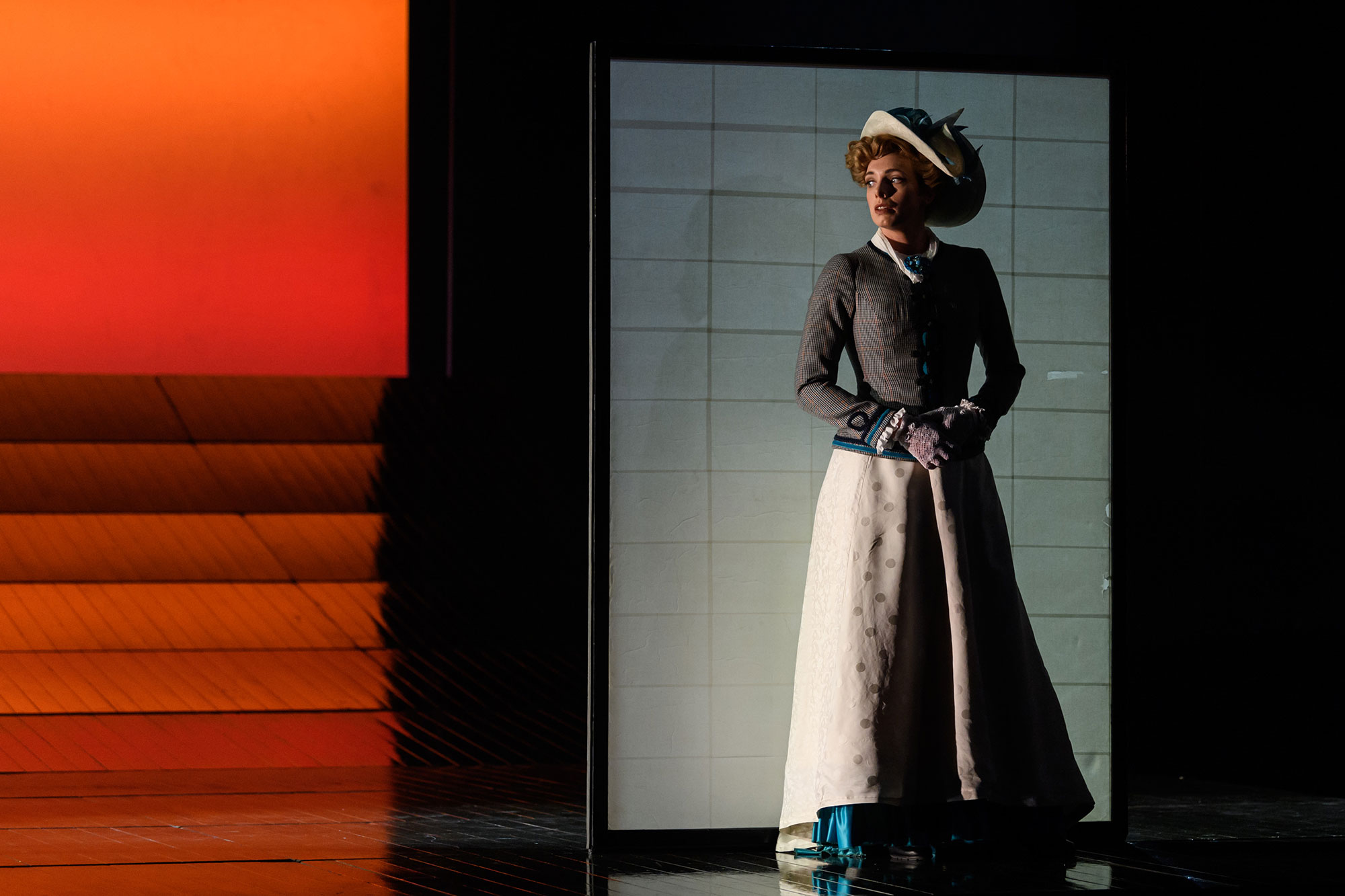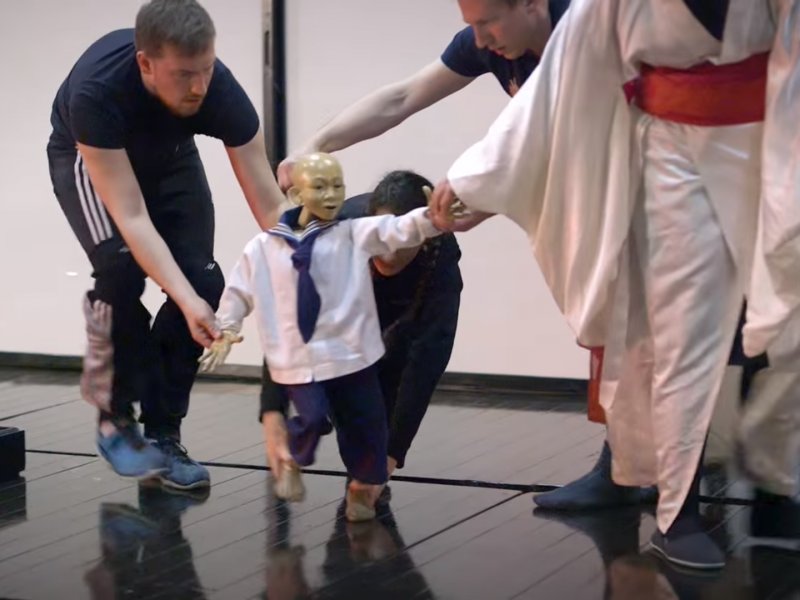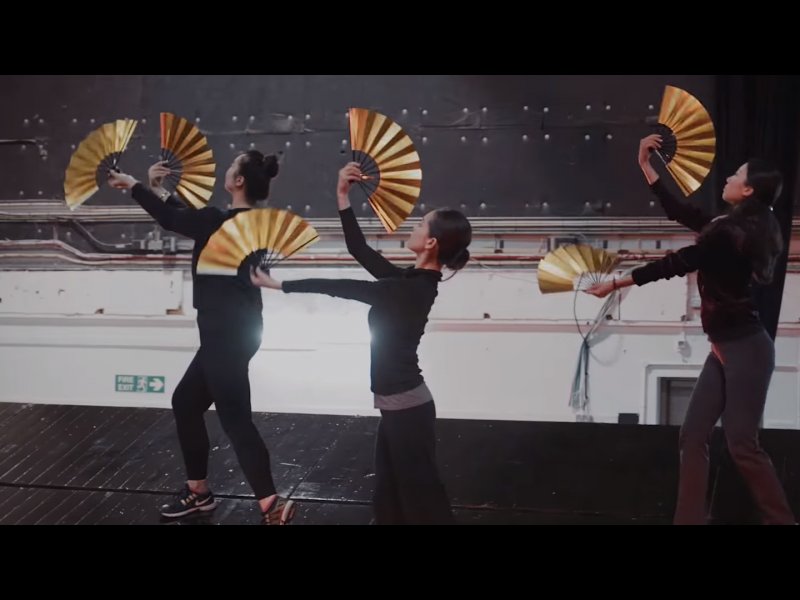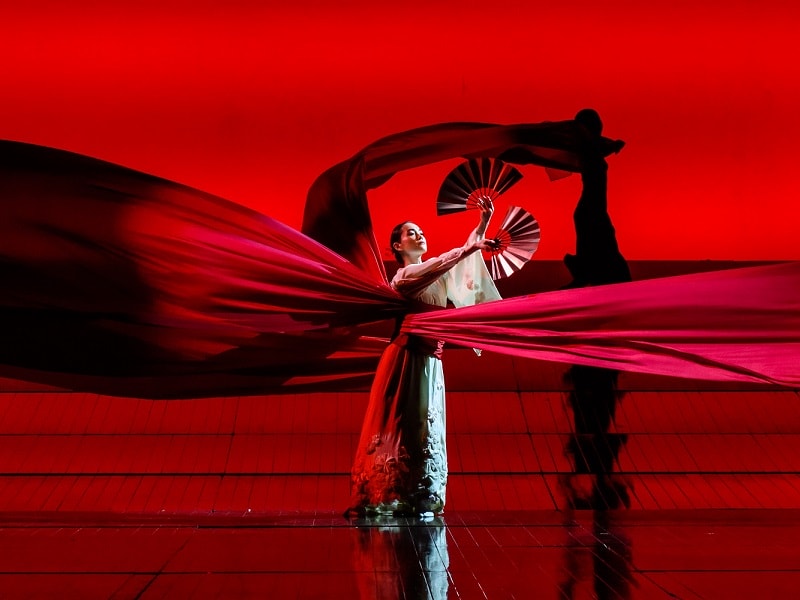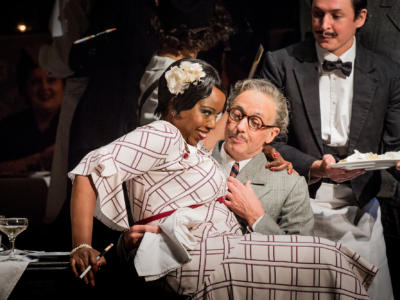Discover Madam Butterfly
Madam Butterfly (in Italian Madama Butterfly) is one of opera’s most enduring tales of unrequited love. Puccini’s poignant score follows the tragic tale of Cio Cio San, a young Japanese girl who falls in love with American naval officer Pinkerton, with devastating consequences.
Madam Butterfly Synopsis
Act I
US Navy Lieutenant Pinkerton is stationed in Nagasaki, Japan. He has paid for an arranged marriage with a fifteen-year-old geisha, Cio-Cio-San, known as Madam Butterfly. As the action begins, Pinkerton is with Goro the marriage-broker. A few minutes before the wedding is to take place, the US consul Sharpless arrives. He tells Pinkerton that he is convinced Butterfly is deeply in love. He fears that Pinkerton will destroy her as he does not take the marriage seriously, but regards it merely as a convenience. Pinkerton dismisses his fears but affirms that he waits for the day he will make a ‘genuine’ marriage to an American woman.
Butterfly arrives with her friends. She charms with her cultivated manners and child-like appearance: she is from a noble family that has been reduced to penury, and has had to earn a living as a geisha. It emerges that her father committed suicide at the request of the emperor.
The remaining wedding-guests and officials arrive and a simple ceremony takes place. As the toasting begins, the voice of the Bonze – the high-priest – is heard. He reveals that Butterfly has converted to Christianity. He and the entire Japanese contingent renounce her. They disperse, shouting curses as they go.
Pinkerton tries to comfort Butterfly. Suzuki, her faithful servant, prepares her for the night. The newly-weds are left alone. Darkness has fallen, the sky is full of stars.
Act II
Part I
Three years have passed. Pinkerton left Nagasaki soon after he ‘married’ Butterfly, promising that he would return in the spring ‘when the robins nest’. Butterfly and Suzuki are on the verge of destitution. Suzuki tries to make Butterfly see that Pinkerton will not return, but she is determined to wait for him.
Sharpless visits with a letter from Pinkerton. He tries in vain to read it through Butterfly’s constant chatter. They are interrupted by Goro and Prince Yamadori, her rich suitor. She has rejected his offer of marriage many times and does so again, insisting that she is already married. Goro points out that, under Japanese law, deserted women are automatically divorced. She is American, she says, and will only recognise American law. The two leave Sharpless and Butterfly alone. He resumes his attempt to read the letter. It is clear that Pinkerton has asked Sharpless to tell her that he will not be returning. Sharpless tries gently to guide her towards facing the truth and suggests she should accept Yamadori’s proposal. She produces her trump-card: she has borne Pinkerton’s son. Surely he will not forget her now? Sharpless, at a loss, leaves her to her waiting.
A cannon-shot is heard from the harbour. Pinkerton’s ship has returned.
Part II
Butterfly has waited all night, but Pinkerton has not come. Suzuki persuades her to rest. Sharpless arrives with Pinkerton hoping to find Suzuki alone. She must be the one to explain to Butterfly that Pinkerton has an American wife, Kate, and that they wish to adopt the son that Butterfly bore him. Pinkerton is aghast at what has happened and leaves Sharpless and Kate with Suzuki. Butterfly bursts in on them and unable to live with the truth, she commits suicide.
Frequently asked questions about Madam Butterfly
What is Madam Butterfly about?
Set in the early 20th century, Madam Butterfly explores themes of love, heartbreak, betrayal and cultural differences. This enduring tale encapsulates a tragic love story between a young Japanese girl called Cio Cio San and an American naval officer, Pinkerton. After marrying each other, San is soon abandoned by Pinkerton, but stays hopeful waiting for his return. However, she is eventually reunited with Pinkerton… and his American wife. Cio Cio goes on to make a devastating decision, which inevitably leads to her own fall.
How long is Madam Butterfly?
An opera performance of Madam Butterfly lasts approximately 2hrs 50mins, including one interval.
Who wrote Madam Butterfly?
The opera, Madam Butterfly, was composed by Giacomo Puccini in tandem with Italian librettists, Luigi Illica and Giuseppe Giacosa.
What are the arias from Madam Butterfly?
There are 14 arias in Madam Butterfly, which are as follows:
Un bel di vedremo
Addio fiorito asil
Chiamera Butterfly dalla lontana
Ancora un passo or via
Con onor muore chi non puo
Che tua madre dovra prenderti
Dovunque al mondo lo Yankee
Ieri son salita tutta sola
Sai cos’ebbe cuore
Gran ventura reiverenza
Or vieni ad adorner
Ce entrate
Spira sul mare
Chi sara chi sara?
Is Madam Butterfly a good first opera?
Madam Butterfly is a great choice for someone who is new to opera. It is one of the most popular and widely performed operas, well known for its beautiful compositions and emotional storyline. The music is captivating, and the themes of love, betrayal and cultural clashes are engaging and easy to follow. Also offering a mix of passionate arias and dramatic acts, Madam Butterfly makes for a great introduction to the world of opera.
Is Madam Butterfly a true story?
Madam Butterfly is not a true story, but works to carefully incorporate elements of real-life events and cultural observations. The opera is based on John Luther Long’s short story (1898) of the same title, which was inspired by a combination of stories told to Long by his sister and Pierre Loti’s semi-autobiographical French novel, Madame Chrysanthème (1887). Long’s Madame Butterfly was dramatised by David Belasco in a one-act play, which was soon seen by Puccini. Puccini wanted to portray realistic culture clashes and authentic displays of love, betrayal and sacrifice that can resonate with audiences.


